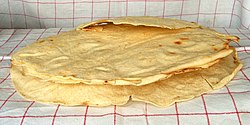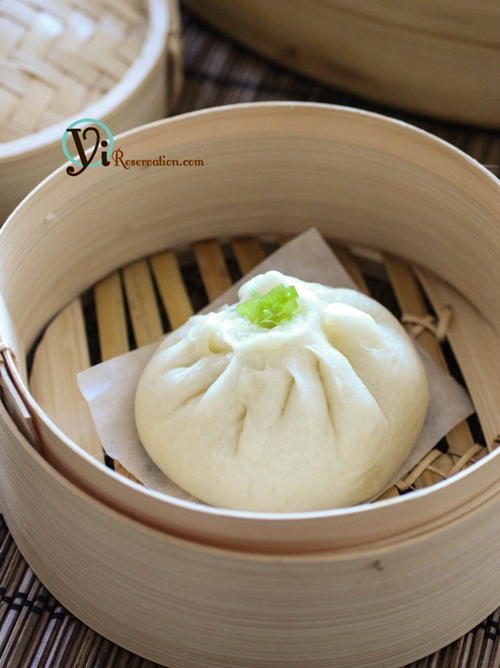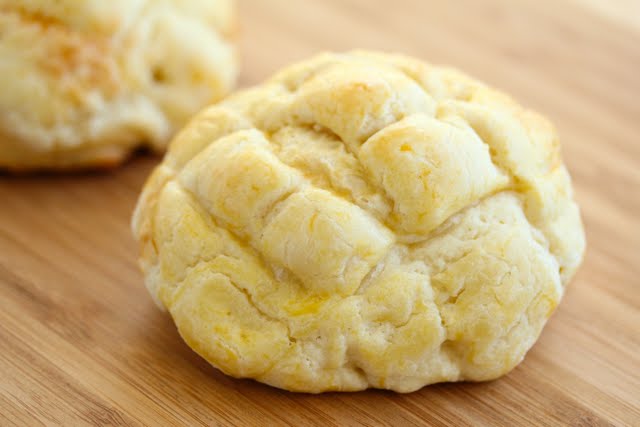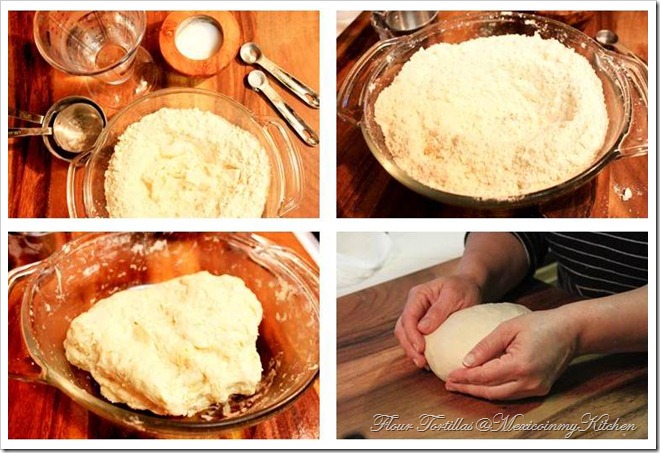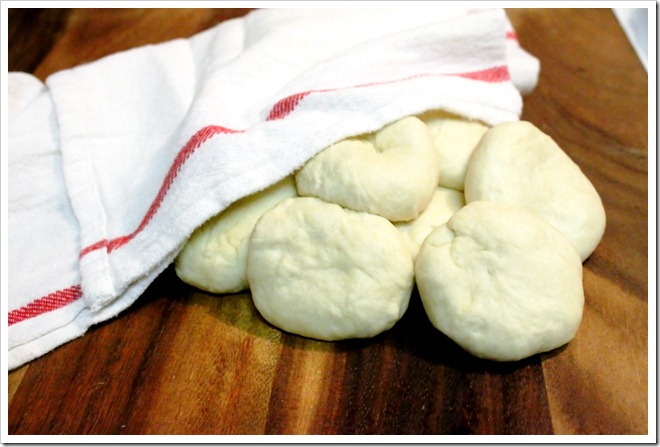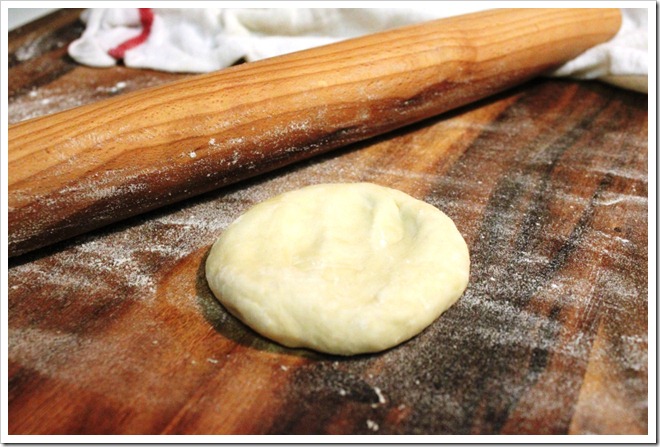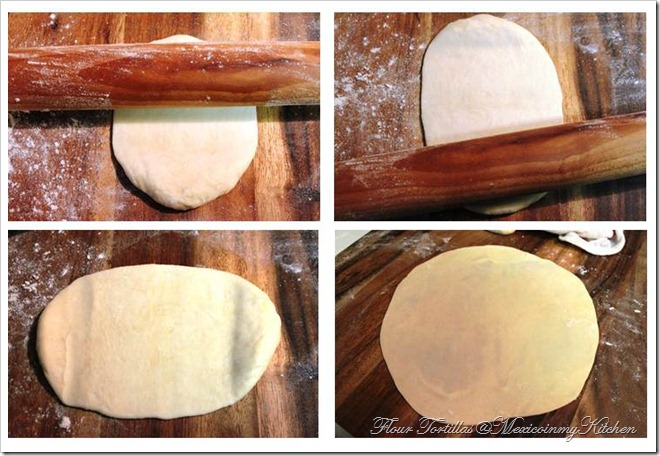sister herb
Official TTI Chef
Bread is a staple food prepared from a dough of flour and water, usually by baking. Throughout recorded history it has been popular around the world and is one of humanity's oldest foods, having been of importance since the dawn of agriculture.
There are many combinations and proportions of types of flour and other ingredients, and also of different traditional recipes and modes of preparation of bread. As a result, there are wide varieties of types, shapes, sizes, and textures of breads in various regions. Bread may be leavened by many different processes ranging from the use of naturally occurring microbes (for example in sourdough recipes) to high-pressure artificial aeration methods during preparation or baking. However, some products are left unleavened, either for preference, or for traditional or religious reasons. Many non-cereal ingredients may be included, ranging from fruits and nuts to various fats. Commercial bread in particular, commonly contains additives, some of them non-nutritional, to improve flavour, texture, colour, or shelf life.
Depending on local custom and convenience, bread may be served in various forms at any meal of the day. It also is eaten as a snack, or used as an ingredient in other culinary preparations, such as fried items coated in crumbs to prevent sticking, or the bland main component of a bread pudding, or stuffings designed to fill cavities or retain juices that otherwise might drip away.
Bread is one of the oldest prepared foods. Evidence from 30,000 years ago in Europe revealed starch residue on rocks used for pounding plants. It is possible that during this time, starch extract from the roots of plants, such as cattails and ferns, was spread on a flat rock, placed over a fire and cooked into a primitive form of flatbread. Around 10,000 BC, with the dawn of the Neolithic age and the spread of agriculture, grains became the mainstay of making bread. Yeast spores are ubiquitous, including the surface of cereal grains, so any dough left to rest will become naturally leavened.
Basic types
Bread is the staple food of the Middle East, North Africa, Europe, and in European-derived cultures such as those in the Americas, Australia, and Southern Africa, in contrast to East Asia where rice is the staple. Bread is usually made from a wheat-flour dough that is cultured with yeast, allowed to rise, and finally baked in an oven. Owing to its high levels of gluten (which give the dough sponginess and elasticity), common wheat (also known as bread wheat) is the most common grain used for the preparation of bread.
Bread is also made from the flour of other wheat species (including durum, spelt and emmer), rye, barley, maize (corn), and oats, usually, but not always, in combination with wheat flour. Spelt bread (Dinkelbrot) continues to be widely consumed in Germany, and emmer bread was a staple food in ancient Egypt.
Canadian bread is known for its heartier consistency due to high protein levels in Canadian flour.
Pita is an ancient semi-leavened bread widespread in the Middle East, Levant and South Eastern Europe.
White bread is made from flour containing only the central core of the grain (endosperm).
Brown bread is made with endosperm and 10% bran. It can also refer to white bread with added colouring (often caramel colouring) to make it brown; this is commonly labeled in America as wheat bread (as opposed to whole-wheat bread).
Wholemeal bread contains the whole of the wheat grain (endosperm, bran, and germ). It is also referred to as "whole-grain" or "whole-wheat bread", especially in North America.
Wheat germ bread has added wheat germ for flavoring.
Whole-grain bread can refer to the same as wholemeal bread, or to white bread with added whole grains to increase its fibre content, as in "60% whole-grain bread".
Roti is a whole-wheat-based bread eaten in South Asia. Chapatti is a type of roti. Naan is a leavened equivalent to these.
Granary bread (a registered trademark, owned by Rank Hovis) is made from flaked wheat grains and white or brown flour. The standard malting process is modified to maximise the maltose or sugar content but minimise residual alpha amylase content. Other flavour components are imparted from partial fermentation due to the particular malting process used and to Maillard reactions on flaking and toasting.
Rye bread is made with flour from rye grain of varying levels. It is higher in fiber than many common types of bread and is often darker in color and stronger in flavor. It is popular in Scandinavia, Germany, Finland, the
Baltic States, and Russia.
Unleavened bread or matzo, used for the Jewish feast of Passover, does not include yeast, so it does not rise.
Sourdough bread is made with a starter.
Flatbread is often simple, made with flour, water, and salt, and then formed into flattened dough; most are unleavened, made without yeast or sourdough culture, though some are made with yeast.
Crisp bread is a flat and dry type of bread or cracker, containing mostly rye flour.
Hemp bread includes strongly flavored hemp flour or seeds. Hemp has been used for thousands of years in traditional Chinese medicine. Hemp flour is the by-product from pressing the oil from the seeds and milling the residue. It is perishable and stores best in the freezer. Hemp dough won't rise due to its lack of gluten, and for that reason it is best mixed with other flours. A 5:1 ratio of wheat-to-hemp flour produces a hearty, nutritious loaf high in protein and essential fatty acids. Hemp seeds have a relatively high oil content of 25–35%, and can be added at a rate up to 15% of the wheat flour. The oil's omega-6-to-omega-3 ratio lies in the range of 2:1-to-3:1, which is considered ideal for human nutrition.
Quick breads usually refers to a bread chemically leavened, usually with both baking powder and baking soda, and a balance of acidic ingredients and alkaline ingredients. Examples include pancakes and waffles, muffins and carrot cake, Boston brown bread, and zucchini and banana bread.
Gluten-free breads have been created in recent years due to the discovery that celiac disease sufferers benefit from a gluten-free diet. Other health benefits have also been attributed to gluten-free diets.[citation needed]
Gluten-free bread is made with ground flours from a variety of materials such as almonds, rice (rice bread), sorghum (sorghum bread), corn (cornbread), or legumes such as beans (bean bread), but since these flours lack gluten it can be difficult for them to retain their shape as they rise and they may be less "fluffy".
Additives such as xanthum gum, guar gum, hydroxypropyl methylcellulose (HPMC), corn starch, or eggs are used to compensate for the lack of gluten.
List of breads:
http://en.wikipedia.org/wiki/List_of_breads
There are many combinations and proportions of types of flour and other ingredients, and also of different traditional recipes and modes of preparation of bread. As a result, there are wide varieties of types, shapes, sizes, and textures of breads in various regions. Bread may be leavened by many different processes ranging from the use of naturally occurring microbes (for example in sourdough recipes) to high-pressure artificial aeration methods during preparation or baking. However, some products are left unleavened, either for preference, or for traditional or religious reasons. Many non-cereal ingredients may be included, ranging from fruits and nuts to various fats. Commercial bread in particular, commonly contains additives, some of them non-nutritional, to improve flavour, texture, colour, or shelf life.
Depending on local custom and convenience, bread may be served in various forms at any meal of the day. It also is eaten as a snack, or used as an ingredient in other culinary preparations, such as fried items coated in crumbs to prevent sticking, or the bland main component of a bread pudding, or stuffings designed to fill cavities or retain juices that otherwise might drip away.
Bread is one of the oldest prepared foods. Evidence from 30,000 years ago in Europe revealed starch residue on rocks used for pounding plants. It is possible that during this time, starch extract from the roots of plants, such as cattails and ferns, was spread on a flat rock, placed over a fire and cooked into a primitive form of flatbread. Around 10,000 BC, with the dawn of the Neolithic age and the spread of agriculture, grains became the mainstay of making bread. Yeast spores are ubiquitous, including the surface of cereal grains, so any dough left to rest will become naturally leavened.
Basic types
Bread is the staple food of the Middle East, North Africa, Europe, and in European-derived cultures such as those in the Americas, Australia, and Southern Africa, in contrast to East Asia where rice is the staple. Bread is usually made from a wheat-flour dough that is cultured with yeast, allowed to rise, and finally baked in an oven. Owing to its high levels of gluten (which give the dough sponginess and elasticity), common wheat (also known as bread wheat) is the most common grain used for the preparation of bread.
Bread is also made from the flour of other wheat species (including durum, spelt and emmer), rye, barley, maize (corn), and oats, usually, but not always, in combination with wheat flour. Spelt bread (Dinkelbrot) continues to be widely consumed in Germany, and emmer bread was a staple food in ancient Egypt.
Canadian bread is known for its heartier consistency due to high protein levels in Canadian flour.
Pita is an ancient semi-leavened bread widespread in the Middle East, Levant and South Eastern Europe.
White bread is made from flour containing only the central core of the grain (endosperm).
Brown bread is made with endosperm and 10% bran. It can also refer to white bread with added colouring (often caramel colouring) to make it brown; this is commonly labeled in America as wheat bread (as opposed to whole-wheat bread).
Wholemeal bread contains the whole of the wheat grain (endosperm, bran, and germ). It is also referred to as "whole-grain" or "whole-wheat bread", especially in North America.
Wheat germ bread has added wheat germ for flavoring.
Whole-grain bread can refer to the same as wholemeal bread, or to white bread with added whole grains to increase its fibre content, as in "60% whole-grain bread".
Roti is a whole-wheat-based bread eaten in South Asia. Chapatti is a type of roti. Naan is a leavened equivalent to these.
Granary bread (a registered trademark, owned by Rank Hovis) is made from flaked wheat grains and white or brown flour. The standard malting process is modified to maximise the maltose or sugar content but minimise residual alpha amylase content. Other flavour components are imparted from partial fermentation due to the particular malting process used and to Maillard reactions on flaking and toasting.
Rye bread is made with flour from rye grain of varying levels. It is higher in fiber than many common types of bread and is often darker in color and stronger in flavor. It is popular in Scandinavia, Germany, Finland, the
Baltic States, and Russia.
Unleavened bread or matzo, used for the Jewish feast of Passover, does not include yeast, so it does not rise.
Sourdough bread is made with a starter.
Flatbread is often simple, made with flour, water, and salt, and then formed into flattened dough; most are unleavened, made without yeast or sourdough culture, though some are made with yeast.
Crisp bread is a flat and dry type of bread or cracker, containing mostly rye flour.
Hemp bread includes strongly flavored hemp flour or seeds. Hemp has been used for thousands of years in traditional Chinese medicine. Hemp flour is the by-product from pressing the oil from the seeds and milling the residue. It is perishable and stores best in the freezer. Hemp dough won't rise due to its lack of gluten, and for that reason it is best mixed with other flours. A 5:1 ratio of wheat-to-hemp flour produces a hearty, nutritious loaf high in protein and essential fatty acids. Hemp seeds have a relatively high oil content of 25–35%, and can be added at a rate up to 15% of the wheat flour. The oil's omega-6-to-omega-3 ratio lies in the range of 2:1-to-3:1, which is considered ideal for human nutrition.
Quick breads usually refers to a bread chemically leavened, usually with both baking powder and baking soda, and a balance of acidic ingredients and alkaline ingredients. Examples include pancakes and waffles, muffins and carrot cake, Boston brown bread, and zucchini and banana bread.
Gluten-free breads have been created in recent years due to the discovery that celiac disease sufferers benefit from a gluten-free diet. Other health benefits have also been attributed to gluten-free diets.[citation needed]
Gluten-free bread is made with ground flours from a variety of materials such as almonds, rice (rice bread), sorghum (sorghum bread), corn (cornbread), or legumes such as beans (bean bread), but since these flours lack gluten it can be difficult for them to retain their shape as they rise and they may be less "fluffy".
Additives such as xanthum gum, guar gum, hydroxypropyl methylcellulose (HPMC), corn starch, or eggs are used to compensate for the lack of gluten.
List of breads:
http://en.wikipedia.org/wiki/List_of_breads



































